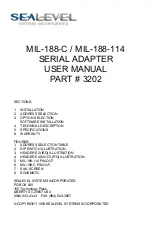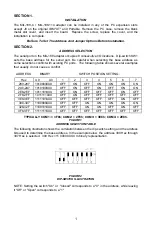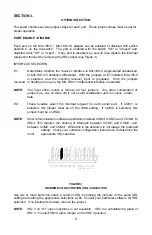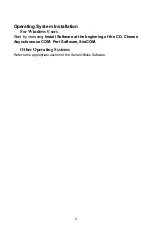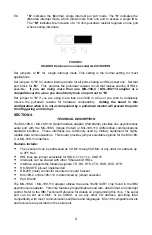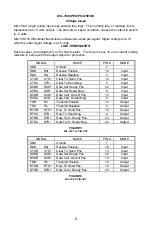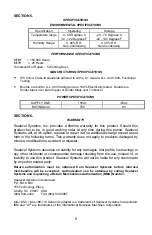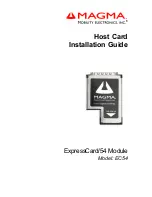
4
E4:
"
N
" indicates the (
N
)ormal, single interrupt per port mode. The "
S
" indicates the
(
S
)hared interrupt mode, which allows more than one port to access a single IRQ.
The
"M"
indicates the inclusion of a 1K ohm pull-down resistor required on one port
when sharing interrupts.
FIGURE 4
HEADER E4 (shown in normal mode) ILLUSTRATION
Set jumpers to "
N
" for single interrupt mode. This setting is the normal setting for most
applications.
Set jumpers to "
S
" for shared interrupt mode for all ports sharing an IRQ except one. Set that
port block for "
M
". This provides the pull-down resistor circuit that makes sharing of IRQ's
possible.
If you are using more than one MIL-188-C / MIL-188-114 adapter or a
compatible card in a bus you should only have one port set to
"
M
".
Set jumper to "
S
" if you are using more than one 3202 in a bus or you wish to completely
remove the pull-down resistor for hardware compatibility.
Setting the board in this
configuration when it is not accompanied by a pull-down resistor will prevent the ports
from triggering an interrupt
.
SECTION 4.
TECHNICAL DESCRIPTION
The MIL-188-C / MIL-188-114 Serial Interface adapter (Part #3202) provides one asynchronous
serial port with the MIL-188-C (
Single Ended
) or MIL-188-114 (
Differential
) communications
standard interface. These interfaces are commonly used by military equipment for highly
reliable data communications. This board provides jumper selectable options for the MIL-188-
C or MIL-188-114 interface.
Features Include:
•
The serial port can be addressed as COM1: through COM4: or any other I/O address up
to 3FF Hex
•
IRQ lines are jumper selectable for IRQ 2-7,10,11,12, AND 15
•
Interrupts can be shared with other "Share-Able" IRQs
•
Interface supports the following signals: TD, RD, RTS, CTS, DSR, DCD, DTR
•
RS-530 DTE pin-out implemented
•
DB-25P (male) connector mounted on board bracket
•
MIL-188-C or MIL-188-114 is determined by jumper selection
•
Part # 3202
The MIL-188-C / MIL-188-114 adapter utilizes the same 16450 UART chip found in the IBM
asynchronous adapter. This chip features programmable baud rate, data format, and interrupt
control. Refer to the IBM Technical Reference for details on programming this chip. The serial
port can be set as COM1: or as COM2:, or as any other I/O address, providing total
compatibility with most communications software and languages. MIL-188 compatible drivers
and receivers are provided on the serial port.

